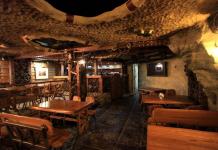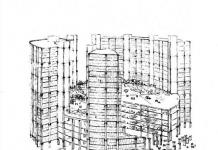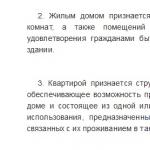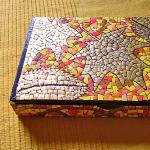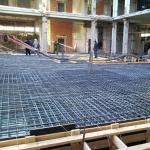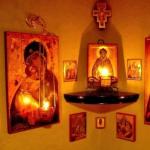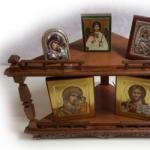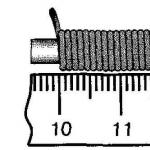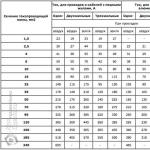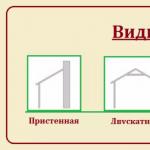Home iconostases represent a kind of small church for a believing Orthodox Christian. They should be given a special place in their home where they can calmly pray in front of the images.
History of the red corner
Home iconostases appeared in Ancient Rus'. A whole corner was set aside for them, which was called red (i.e. beautiful). In this place, icons were placed, candles and lamps were lit. In the morning and evening, as well as at times of special spiritual need, household members said their prayers here.
The iconostasis of those times was a multi-tiered shelf on which a god was hung - a small curtain that covered the images of saints and the Savior on the sides. The icons were hidden under the gospel - a special cloth that was pulled back only during prayer. It was no coincidence that such a tradition appeared in Rus'. It is known that the first image of the Savior would have been created by Himself, according to His will of God: after Jesus sprinkled his face with water and wiped it with ubrus (cloth), His face remained on this canvas. He sent this painting to the sick ruler of Asia Minor, Abgar, thanks to which he was healed. After this, the prince gave the order to nail the sacred board over the gates of the city. After 900 years, the sacred image was transferred to Constantinople. Now every year on August 29, Orthodox Christians celebrate the feast of the discovery of the image of the Savior Not Made by Hands and consecrate hand-woven fabrics.
What else was placed on the shelf for images?

Home iconostasis of those times were also intended for storing holy water and prosphora. The household hid the Gospel and memorial books (special books in which the names of all the deceased and living Orthodox Christians of this family were kept) behind the god. Particularly skilled needlewomen created doves (as a symbol of the Holy Spirit) from scrap materials and hung them from the iconostasis. In the red corner it was obligatory to have lamps and candles, which were lit during home services.
A similar small temple was in every Orthodox home until the 1917 revolution. After the Bolsheviks came to power, people continued to pray, but they did it in secret. Therefore, from the richly decorated home iconostases, only a few images remained, which people carefully hid from prying eyes, fearing persecution. The modern red corner is somewhat different from the one created by our ancestors, since many of the traditions of its creation have simply been forgotten.
Create your own red corner
What the home iconostasis will be like depends only on the owners of the house. However, remember to follow the following rules:

- Holy images must be installed far from technology (TV, computer, etc.) - the farther from everything worldly, the better.
- There should be enough space in front of the icons so that those praying do not feel crowded. And during prayer, it is better to place church books (prayer books, the Gospel) on a folding lectern (stand).
- You should not place icons individually on bookshelves, in cabinets, while crowding these images with other worldly objects: souvenirs, pictures, etc. This is strictly prohibited, since by doing so we show disrespect for God. After all, for some reason, many people put photographs of people we love and care about, especially those who have left this world, in the most prominent place, without cluttering them with unnecessary objects. The same should be done with icons, showing love and respect for holy images.
The difference between icons and paintings

If you have reproductions of paintings at home that reflect biblical scenes, you should not install them on the iconostasis.
The main difference between a holy image and painting is that in the first case, through icons we communicate with the Lord. And since the iconostasis is a sacred place intended for solitude in prayer, the inclusion of reproductions in it would be simply inappropriate.
Icons cannot be hung on the wall next to posters of celebrities - by doing this we insult holy images, putting them on a par with earthly idols.
It is better to place home iconostases in the eastern part of the house, since this part of the world has special significance in Orthodoxy.
For example, it is known that the Lord created a paradise for people in the eastern part of Eden. And the Gospel says that just as lightning comes from the east to the very west, so the Lord comes from Heaven. The church altar is also located in the eastern part. If the windows face this side, the home iconostasis, a photo of which you will find in this article, is installed in any other suitable place.
Which shelf should I buy?
Whether you create home iconostases with your own hands from wood or purchase them from a furniture store or church shop is entirely up to you. If you want to buy a shelf, do it in specialized Orthodox stores. There is a wider assortment of iconostases, and the sellers will always advise and help with the choice. Based on the material, they can be divided into wooden and plywood. They can be single-tiered or multi-tiered, straight or angular. There are even solid iconostases that already contain holy images. But such shelves are mostly made only to order. To understand what such a home iconostasis looks like, the photo is presented in this article.
If you decide to create a real red corner, choose multi-tiered shelves. On them it will be much easier to recreate a majestic wall with holy images, like those installed in temples. Whether your home iconostasis will be angular or straight depends on where it will be placed (on the wall or in the corner of the room).
What icons are needed?

First of all, every home should have images of the Savior, the Mother of God and St. Nicholas the Wonderworker. Of all the icons of Our Lord, the half-length Image of the Almighty is most preferable for home prayer. On this one he holds in his left hand an open book in which is written “A new commandment I give to you: love one another.” With his right hand the Lord baptizes the person praying.
Among the images of the Mother of God, the Russian people especially loved icons such as “Tenderness” and “Hodegetria” (Guide). In the first image, the Virgin Mary holds a baby in her arms, who gently hugs her neck and presses her to her cheek. The most famous icon of this type is the Vladimir Icon of the Mother of God. Its distinctive feature is that the baby’s left heel is completely turned outward. In the image of Hodegetria, the Mother of God is depicted with a baby, who holds a bundle in her right hand, and with her left hand she overshadows all those praying. A striking example of this image is the Kazan Icon, “Quick to Hear,” and “Helper of Sinners.”
Additional images

In addition to these main icons, on the home iconostasis you need to put images of saints after whom your family members are named. It is also advisable to purchase an icon of the healer Panteleimon - a healer of mental and physical illnesses. The choice of other images depends entirely on the needs of the household. For example, you can purchase an image of Peter and Fevronia, to whom they pray for family well-being. Before they ask for help in learning and good endeavors. Unmarried women can pray before the image of Xenia of St. Petersburg, who, by the will of God, became a helper to people in matters of marriage.
Recently, in many homes, one of the central icons has become the image of the blessed old lady Matrona of Moscow. Even after her earthly death, she helps in everything those who come to her at the Intercession Church or to her grave at the Danilovskoye Cemetery, or simply turn to Matrona in home prayers. Many people have already received healing and help from her. It was not for nothing that she said: “Come to me and tell me everything as if you were alive.” By this, Matrona meant that her earthly death does not mean a spiritual death: after all, she is still with us.
Home iconostasis. How to arrange icons
The correct placement of images in the space allocated for them is very important. The Crucifix is placed above the iconostasis. It can be purchased at a church store or made from wood yourself. On the next tier there should be images of the Savior, the Mother of God and St. Nicholas the Wonderworker on the bottom shelf. In this case, the image of the Lord should be in the middle, on the right (right) is the Virgin Mary, and on the left (on the left) is St. Nicholas the Pleasant.
A little lower they place icons of saints revered by the family. On the last tier you can place a bottle of holy water, candles and the Gospel.
Making the corner red
You can decorate your home iconostasis with fresh flowers and willow branches after the Twelfth Feast - the Entry of the Lord into Jerusalem. And on the day of the Descent of the Holy Spirit, shelves with images are framed with birch branches, as a symbol of the grace of the power of God.
You can also install reproductions of images on the shelf for icons. They must first be consecrated and then added to the home iconostasis. Embroider an icon case (frame) for them with beads, and then they will look harmonious with other icons.
Making a shelf

If you do not have the opportunity to purchase a stand for images, or all the models that you have come across did not appeal to you or are not suitable (for example, a small number of tiers, limited space, etc.), then do-it-yourself homemade iconostasis, photos of which are presented in the article , you can make it yourself. For a standard three-tier iconostasis you will need wooden boards, a drill and screws. In order to assemble it, you need to create drawings of a home iconostasis. Using them, you can easily calculate the dimensions of the wooden panels, which will depend on the number of icons located on the iconostasis.
Simple process
The most basic stand for holy images can be made from plywood. First you need to attach the icons to it with screws in accordance with the heavenly hierarchy. After this, you should make a chasuble for the icons - this is a special frame that frames the images. It can be created from embroidered fabric or from beads and beads. This will give the icon shelf a festive and solemn look. This is how you can make a homemade iconostasis with your own hands. Photos of similar works in this article will help you in its design.
Thus, the creation of a small church at home is not so much a prerequisite for the life of an Orthodox Christian, but rather his spiritual impulse and desire. After all, those who believe and love the Lord always want to turn to him in prayer both during the liturgy and at home services. It doesn’t matter whether your iconostasis is made of expensive materials and filled with gilded images, or whether you yourself created it manually, collecting holy images. The main value is your faith and desire for spiritual improvement.
Is it possible to make shelves for icons yourself? What materials are better to choose? Let's try to figure this issue out together. Slavic Orthodox traditions allow the use of icons to decorate living spaces. This tradition testifies to people’s desire for religion and respect for church rituals and traditions.
As a home iconostasis for placing icons, you can consider a corner shelf for icons, as well as various church items. The canons of Orthodoxy suggest the installation of the main icons in the corner or on the eastern wall of the room.
Attention! In addition to Orthodox items, shelves for icons should not be loaded with other items.
Let's try to figure out how to make corner shelves for icons.

Creating shelves for icons
For work related to the creation of shelves for icons, you need special tools for woodworking: drill, lathe, milling cutter, jigsaw.
The materials needed to make shelves for icons include boards from any wood, pieces of slabs, wax or varnish, silver and black paints, and wood glue. Component materials and hardware require carved slats, a metal or wooden crucifix. Screws and original plugs are suitable as fastening elements. To secure the product to the wall, you need hinges and dowels.
Some of the carved elements can be made with your own hands. For example, start making carved elements and original shelf parts. The crucifix, which is the center of the icon, is made only in carved form.

Advice! Such parts for placing icons are made by craftsmen, and some industrial enterprises and church shops are also involved in their creation.
In addition to such details, the corner shelf for icons should have a back wall in the form of a carved iconostasis. The carving is made with floral ornaments, outlines of saints, and fabulous birds.
To decorate the upper part of the shelf for icons, you can choose the outline of an Orthodox church.

Advice! A do-it-yourself corner shelf for icons is suitable for those who have skills in working with wood.
You can cut out bas-reliefs yourself and choose interesting reliefs. To carve a crucifix, you must first select a high-quality sketch, and only after that begin to implement your plans.
The types of wood from which a crucifix can be carved include birch, aspen, spruce, pine, and juniper boards.
Attention! The work will require a set of wood cutting tools.

The procedure for making a shelf for icons
On a board, the thickness of which is fifteen millimeters, the outlines, as well as the main contours of the parts, are transferred from a paper sketch to the main board. Next, use an electric jigsaw to cut out the crucifix. Using cutters you need to make convex parts. The carving must be done in layers, carefully highlighting the internal parts with a thin cutter. Once the procedure for cutting the crucifix is completed, you can begin sanding the product, armed with fine sandpaper.
Advice! If you have to cut out bas-reliefs in segments, it is better to secure them with a sheet of plywood on the back side.

Then the decorative parts are glued together and attached to the sheet of the slab. To remove all excess, you can use a jigsaw or an electric cutter.
Using sandpaper, it is necessary to carry out high-quality sanding of the side of the finished product.
To make beautiful crossbars you will need certain professional skills, as well as certain equipment. After the balusters are made, it is important to carry out high-quality sanding of the product.
For a shelf for icons you will need several parts:
- side panels;
- vertical racks;
- sides;
- shelves
Shelf templates for icons can be made from pieces of wood board.
Attention! Professionals do not recommend using plywood for templates, since after cutting it needs to be significantly modified.
You will need two side panels for the shelf, and you also need to take care of purchasing high-quality fasteners.

Sequencing
First you need to attach the ready-made templates to the board. Next, the part is formed using an electric jigsaw. The edges are processed using a milling cutter; all irregularities and roughness present on the surface are sanded with abrasive paper. Before making holes, you need to mark them with a pencil. Next, the side panels are prepared using the same algorithm. After assembling the product, it is advisable to varnish the shelf.

Wall fixation
To attach a corner shelf under icons on the wall, you will need dowels. First you need to attach hanging loops to the finished product. Next, the shelf is applied to the wall, and the places where the dowels will be located are marked. The holes for them are made with an electric drill.
There are certain requirements that must be met in order for the finished shelf for icons to be beautifully mounted on the wall:
- the product should hang at the level of human eyes or higher;
- there should be no other decorative elements next to the icons;
- if there will be functional lamps on the shelf, it is important to ensure fire safety (there should be no flammable materials near the shelf)
Decoration features
Basically, natural wood is used in the manufacture of shelves for icons. If you can’t make carved strips and parts with your own hands, you can limit yourself to creating an imitation of it. To obtain a similar effect, you can first burn out the design, then cover the finished fragments with decorative enamel. To do this, the contour of the ornament is transferred to the top panel or side, and all contours are outlined using burning devices.
Attention! The finished pattern must be uniform over the entire surface of the product, otherwise the shelf will have an unaesthetic appearance.
As soon as the contour application is completed, enamel is applied to the surface with a thin brush, then the product is coated with colorless varnish.

Master Class
Currently, the tradition of decorating your home with Christian icons is returning; even in city apartments you can find a homemade “red corner”, which is often called a shrine. If you choose the right materials for the shelf, it can be made into a functional decorative element of the apartment’s interior. The priests say that icon shelves should be in the home of every believer.
In the manufacture of such products, you can use wood, plywood, polymer materials, and metal.
Depending on personal preferences, shelves for icons can be single-tiered or multi-tiered structures. Icons for the iconostasis can be mounted on a table or placed on a shelf.

To create a three-tier structure, stock up on a hand-held milling machine, a jigsaw, a ruler, a pencil, nails or screws, abrasive material, a hammer, and wood glue.
In order for the shelf to be beautiful and delight its owner for a long period, it is important to carry out preliminary measurements of the width, height, and depth of the planned structure.
Advice! Professionals consider the optimal size for a corner shelf for icons to be 70 centimeters in height.
You need to transfer the drawing to plywood or wood. If the surface is dark in color, it is better to use a construction knife instead of a pencil. Professionals recommend numbering the parts of the drawing to prevent errors during assembly. As soon as the main details of the planned iconostasis are cut out with a jigsaw, all edges of the product are processed with a hand router.
To ensure that there are no rolling pins or irregularities on the surface of the shelf, the surface is sanded with sandpaper.

Attention! When grinding, the abrasive material must be moved in the direction of the grain.
To connect the parts together, you can use nails or screws. For strength, you can also arm yourself with glue designed for wood. You can varnish or stain wood to protect it from high humidity and temperature changes, and also to give the product an aesthetic appearance.
Basically, shelves for icons are arranged in three rows, but there is one main row - deisis. In order for the created iconostasis to be made correctly and reliably protect the apartment and its inhabitants, it is important to arrange the icons in a clear order.
The upper part is the deisis, in its center there should be an icon of Jesus.
To the left of her is the image of the protectress - the Most Holy Theotokos, and to the right side is always the icon of John the Baptist.

Ideally, the number of icons is 12 pieces - according to the number of major Christian holidays. On the bottom shelf of the iconostasis you create yourself, you can place any icons that are revered in a certain region.

Conclusion
Despite the fact that the twenty-first century is a time of innovative computer technologies, people still think about their souls and turn to higher powers for advice. Not everyone has time to attend church services, so improvised iconostases appear in private houses and city apartments. Don’t know where to start with the construction of a shelf for icons? In this case, first carefully study the recommendations of professionals, and also look at photographs of finished work:
After you get the first idea of the procedure for carrying out the work, you can proceed to the implementation of your idea. If you follow all the recommendations of professionals, you will receive a high-quality and original iconostasis for icons. Many people own icons that should be placed on a special shelf, and not placed next to the TV or tape recorder.
Home iconostasis made of natural wood with carved patterns
The tradition of arranging a home iconostasis has existed for more than one century. Although in modern homes icons are often placed on bookcase shelves or hung on the wall, it is best to set up a separate special place for them.

Single-tier straight rack - shelf for icons
A good option would be a hanging shelf, which according to the canon should be placed on the eastern wall of the house. Often such a shelf is made corner, two or three tiers high.

Beautiful wooden shelf for icons in the corner of the room in three tiers

Corner shelf for icons with candlestick

Shelf for icons “Home mini-iconostasis corner”
In workshops you can order a stand for home icons of any size and configuration, but this is quite an expensive job.

Corner shelf made of fiberboard, made in three tiers
An easier option is to use a regular corner shelf from a hardware store, but this may cause sizing issues. In addition, you will have to look for a model that will “fit” better into the interior. All these difficulties can be avoided if you make a shelf for icons yourself - this is quite feasible even with little experience in carpentry.

Wall-mounted corner shelf for wooden icons
A do-it-yourself icon shelf can have any convenient design. Corner shelves are made single-level or in several tiers. To connect several levels, supports carved from wood are usually used. The finished shelf is often decorated with carvings, openwork overlays, and covered with special carpentry varnish and wax.

Small corner shelf for icons, two tiers

DIY home iconostasis
Required materials and tools
To make a corner shelf, wood of various decorative species is used - for example, oak or cherry. A less expensive material would be pine board. In addition to wood, you can also use plywood or chipboard. The thickness of the board can vary from 1.5cm to 2.5cm. You will also need boards of small width in order to carve the supports.
To work you will need the following tools:
- tape measure or ruler;
- hacksaw;
- sandpaper for wood;
- electric jigsaw;
- electric drill;
- self-tapping screws;
- wood glue;
- wood varnish.

Required Tools
To attach the finished shelf to the wall, you will also need masonry drills, metal corners or hinges, and self-tapping screws with dowels.
Manufacturing stages

Carved corner shelf for handmade icons with drawing
Before starting work, you should make a drawing of the project. The size and number of shelves depend on the type of icons that will be placed on the finished home iconostasis. To make a simple two-tier shelf, you will need two 1.5 cm thick pine boards, as well as four supports.
- Using a marker or pencil, the drawing is transferred from paper to wood. The sides adjacent to the wall should be at right angles to each other. The outer edge can be straight, semicircular or curly.
- Using a saw and jigsaw, parts of the future product are cut out according to the drawing.

We cut out three parts using a jigsaw according to the template - sidewall, side and bottom
- The edges and surfaces of the parts are sanded with sandpaper.
- The supports can be made as simple as flat planks, or shaped using a jigsaw.

The workpiece is milled using a stencil using special equipment
- If necessary, sides for shelves are cut from thinner boards.

To turn decorative parts you will need a lathe or take them ready-made
- Using self-tapping screws, the shelves are attached to the supports and then connected to each other.

We assemble the shelf - the bottoms are screwed to the turned elements using self-tapping screws
- Wood glue is used to strengthen joints and also to attach beading.

When connecting the sidewalls to the bottoms, the screws should hit the middle of the ends of the bottoms
- Metal hinges are attached to the back of the shelf or to the supports.

The sides are screwed on using cylinders - self-tapping screws are inserted into the holes from the bottom, the cylinders are put on, the hardware is screwed into the side
- Holes are drilled in the wall for the dowels of the mounting bolts on which the product will hang. You need to make sure that the fastenings will support the weight of the shelves with icons.

The final stage is coating the finished product with drying oil and attaching it to brackets in the corner
After completion of the work, the finished shelf is treated with stain and varnish. Both colorless varnishes and those that give the board the color of different types of wood are suitable. When choosing a quick-drying varnish, the product is ready for use in a few hours.

Small shelves for icons of different colors - pine, walnut, mahogany
Decoration

Depending on the complexity of the elements of decorating shelves for icons, you can make them yourself or purchase them ready-made
The most common way to decorate a home icon case is wood carving. You can do it yourself using a jigsaw. If you do not have the necessary experience, carved elements can be bought at a hardware store or ordered in a workshop. The finished carved plates are attached to the shelf with wood glue.

Soft wood is selected for carving: birch, spruce, pine, aspen or juniper
Another way to decorate is to burn out the ornament using a special device - for this, you first apply a drawing of the pattern to the wood with a pencil. The shelf can also be painted - special wood paints are sold in construction departments. An alternative to strict monochromatic painting is to apply a pattern to the enamel with paint of a different color.

You can burn out the ornament and then open individual fragments of the image on the shelf with enamel
To further strengthen and decorate the shelf, its back walls are covered with a wooden panel. It can also be decorated with carvings, painted with varnish and enamel.

Shelf for icons with a beautiful back wall

To decorate the upper part of the shelf for icons, you can choose the outline of an Orthodox church
When using a plywood board, these methods will not work - but painting with acrylic paint with the addition of gilding will look impressive on such a panel.

A small figured shelf for icons with candlesticks and a lamp
Video: DIY iconostasis shelf Woodcarving DIY
Each church has a large number of icons; many believers prefer to set up a place to worship God at home. It serves to read the prayer rule. Near the calm faces of heavenly patrons, it is much easier to make requests to the Lord.
 The history of the emergence of church decoration goes back many centuries. Initially, there were no partitions in the churches at all, then curtains appeared, because of which the altar part was not visible. Over time, the design of Orthodox churches was transformed to its current state.
The history of the emergence of church decoration goes back many centuries. Initially, there were no partitions in the churches at all, then curtains appeared, because of which the altar part was not visible. Over time, the design of Orthodox churches was transformed to its current state.
The personal home of a Christian should be, as it were, a continuation of the Church. This is what he talks about "red corner". It has primarily a prayer purpose. It is also customary to store revered objects in the “shrine” - consecrated willow, eggs, Epiphany water.
There are different types of iconostases; they can be purchased either in church shops or ordered. Prices for products by private craftsmen in Moscow start at 800 rubles. They depend on the size, shape, material and complexity of the work performed.
 In this matter, many follow traditions - the iconostasis is positioned so that it is clearly visible right from the entrance. This is done because, according to ancient custom, the guest must immediately bow to the Lord and the saints. First you need to make the sign of the cross, then read a short prayer, wish peace to the house that receives the guest.
In this matter, many follow traditions - the iconostasis is positioned so that it is clearly visible right from the entrance. This is done because, according to ancient custom, the guest must immediately bow to the Lord and the saints. First you need to make the sign of the cross, then read a short prayer, wish peace to the house that receives the guest.
According to church tradition, in churches the altar part, fenced with an iconostasis, is located on the east side of the building. If there is such an opportunity, it is necessary to place home images according to this principle. But in practice this is not always feasible, and the Church does not require it. Where should the “red corner” be located?
- The place near the icons is given only to the saint, there should be no foreign things on it - TV, posters, other modern things are located to the side.
- According to ancient tradition, images (both in the temple and in the apartment) are usually decorated exclusively fresh flowers. They are a symbol of eternal life, resurrection, and God's power.
- This is the place for the lamp, church candle, blessed church oil.
- Bottle of holy water can be stored both on a shelf with icons and in another place.
The lamp can be anything - hanging or not. The burning flame symbolizes the human heart, which burns in love for God. It is expressed in prayer, so candles and (or) lamps are lit while reading the prayer rule, akathists, and Psalms. You can use special church oil or olive oil (first pressed), as was the case in the times of the ancient church.
You should not place photographs of famous confessors or modern righteous people next to the images. At least two people should be placed in front of the icons, because the family traditionally prays together.
 Your prayer corner can be very different in size and shape. The simplest iconostases can be purchased at any church store. The price of simple wooden corner shelves is quite low. It is also important which images will be in front of family members.
Your prayer corner can be very different in size and shape. The simplest iconostases can be purchased at any church store. The price of simple wooden corner shelves is quite low. It is also important which images will be in front of family members.
There are no clear rules for lay people in this matter. The main thing is that two main icons are present - Lord Jesus Christ and the Virgin Mary. Most often, half-length images are taken. The hand of the Son of God is raised in blessing; overall, there is minimal dynamics in the composition. The Mother of God is most often depicted together with the Child of God - she holds the Son in her arms.
But, in general, you can be guided by personal preferences. Over time, it is likely that new images will appear in the family. It is absolutely not necessary to hang them all on the wall, because the main goal is not to show off your collection, but to gather a person’s attention to prayer. Excessive amounts will make it difficult for the believer to concentrate. Shrines can be stored in a box, from time to time remove some and display others, in accordance with the church calendar.
As a rule, in the apartments of believers in Moscow (and other Russian cities) you can see images of other Orthodox saints. For example, the patron saint of the capital is St. George the Victorious. They are also highly respected there. Elder Matrona. It would be useful to place on the shelf the faces of saints whose names are borne by the owners of the house.
Self-production
 Many stores located in Moscow today sell goods remotely, delivering them by mail, some do not even require prepayment. You can assemble your own “red corner” literally without leaving your home.
Many stores located in Moscow today sell goods remotely, delivering them by mail, some do not even require prepayment. You can assemble your own “red corner” literally without leaving your home.
But not everyone is satisfied with ready-made options. Some craftsmen make custom-made home iconostases. However, not everyone can afford it. Craftsmen can make a home shelf for icons from wood at home. Of course, it will take time and diligence, but in general, nothing is impossible in this matter.
- First you need to make it or find it online internet drawings. The product may consist of one or several tiers. The design must be safe if the owners are going to use lamps. The distance between the shelves must be large enough so that the wood does not heat up.
- The height of the structure does not play a fundamental role. It should be convenient for the owners to put up the images and take them down to wipe off the dust. It is desirable that holy icons were not much above eye level, then nothing will distract from prayer.
- You can make not shelves, but locker - icon case. Then you should take into account the size of the images that will be located there. At the bottom you can make a shelf where the Holy Scriptures, candlesticks, blessed oil, etc. will be stored.
Conclusion
According to Orthodox tradition, holy images should not be attached to the wall; they must be placed on a special shelf or in a special cabinet. You can arrange the shrine yourself or purchase a ready-made version. Prices depend on the material, size, etc., every believer will be able to choose something to suit their budget. The main thing is not the cost of the iconostasis, but how much faith there will be in a person’s heart while near the holy place.





